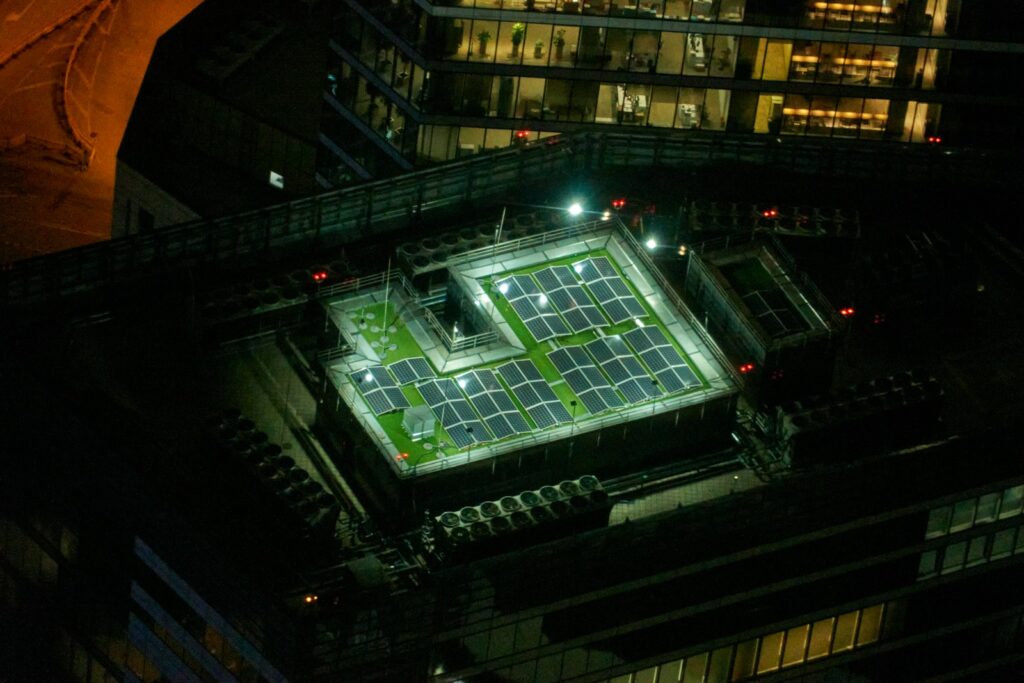We live in a digital age in which everything is run by computers — from smartphones and laptops to data centers and smart homes. But this computing ability has a price: energy.
One of the biggest challenges of 2025 is going to be how to build computing systems that use less power and, at the same time, deliver better performance. The energy used by the tech industry is escalating. Every time we stream a video, open a website, or use cloud storage, we’re consuming energy somewhere along the line.
Big companies run massive data centers that need power around the clock. It is not just a financial pressure but an environmental one. As the world is shifting to green energy and sustainable living, energy-efficient computing systems are no longer a luxury – they are a necessity. Governments, businesses and tech companies are facing mounting pressure to cut their carbon footprints and energy consumption. And the clock is ticking.
In this article, we will talk about how energy-efficient computing is being realized in 2025, why it is important, and the latest trends and solutions.
How Computing Systems Consume Energy
Why energy efficiency matters
Before we dive into energy efficiency, let’s first take a look at how computing systems consume energy.
The processor or chip is the heart of any device. This chip executes millions of operations per second, and that demands power. Whether you’re writing a message, playing a game, or using a business application — your system is drawing power.
Here’s where the energy goes:
- Running the processor (CPU, GPU, etc.)
- Cooling systems to prevent overheating
- Memory storage like RAM and SSDs
- Power supply units converting electricity for use
- Networking tools like routers and data cables
The bigger the machine, the more energy it is going to require. Often thousands of servers are running at once in a data centre which requires its own unique cooling room. They can consume as much energy as small towns.
In 2025
there has never been a higher demand in speed or storage, including smart cars and so many 5G networks. Everything relies on high-end computing. The focus for compute now is reducing energy use while maintaining performance.
New Technologies to Make Computing Systems More Energy-Efficient in 2025
Luckily, the technology world is continually progressing.
More companies are developing computing systems that accomplish more with less energy. Here’s some of that progress:
- Low-power processors
These chips are being designed to be super smart, instead of working hard. Rather than always running at maximum speed, these chips can slowdown or shut down pieces of themselves when they are not needed. This saves energy without sacrificing performance. - Smart cooling
Standard fans and air conditioning consume a great deal of energy. There are different types of liquid cooling and even nature-based cooling options becoming more common by 2025. Some actually use outdoor air or recycled water to cool their equipment. - Edge computing
Edge computing processes information closer to its needed location, as opposed to sending everything routed to the cloud. By not wasting energy sending data that travels long distances or putting burdens on servers, this approach makes sense. - Green data centers
Some data centers are even being designed with energy efficient layouts, solar panels, and better air circulation systems. Some use 100% renewable power.
Why Businesses Are Prioritizing Energy-Efficient Systems
Businesses today care about more than just profits. They also care about their brand image, customer trust and environmental responsibility. Energy-efficient computing systems can make a difference in all of these areas.
Here’s how:
- Lower energy bills
Run efficient machinery and you’ll pay less for electricity. For businesses with thousands of devices, the savings add up quickly. - Sustainability goals
More and more companies are pledging to reduce their carbon emissions. Energy-efficient tech is one way to help meet those targets. - Government pressure and rules
In many countries, new regulations require less energy consumption and more reporting. Businesses that don’t adapt may face fines or other penalties. - Customer loyalty
Today’s consumers care about the environment. If a company is perceived as green, they have a better chance of gaining people’s trust and business.
As a result, many companies are upgrading old computers with new, energy-efficient computing systems. They are also educating employees to utilize power-saving tools and adopt better habits.
What You Can Do to Help Build a Greener Tech World
You don’t have to run a business to make a difference. All of us who use a computer or smartphone can help create a more energy-efficient future.
Here are some simple steps you can take:
- Turn off your devices when you’re not using them
Keeping your computer on overnight is a waste of energy and money. Turn it off when you don’t need it. - Enable power-saving options
If your device has a low-power mode, turn it on. Use it whenever you can. - Buy energy-efficient machines
When purchasing a new laptop or PC, check for energy ratings or green certifications. - Remove unused files and apps
Unnecessary software and storage space consume resources. Clean up your system to keep it running smoothly. - Switch to cloud services wisely
Some cloud platforms are more energy efficient than on-premises ones. But choose providers that run on green energy or have good sustainability practices.
These small actions, when multiplied by millions of users, can make a huge difference. Energy-efficient computing systems are not just about big servers — they’re about smart choices every day.
Looking Ahead: The Future of Energy-Efficient Computing
What can we expect for the future of energy-efficient computing? Expect to see even more innovation in 2025 and beyond.
Here are a few exciting ideas being tested now:
- “Carbon-aware computing”
Some systems can detect when clean energy (such as solar or wind) is available and schedule heavy computing tasks during those times. - Recycled hardware
Companies are now building new machines out of used parts to cut waste and save energy. - Better battery tech
As batteries advance, more devices will run on stored energy and draw less power from the grid. - Smarter software
Apps are being developed to be more resource efficient. Cleaner code means systems don’t have to work as hard.
In short, the drive for cleaner, greener and smarter computing systems is here to stay. The goal is clear: protect the planet without hindering progress.



